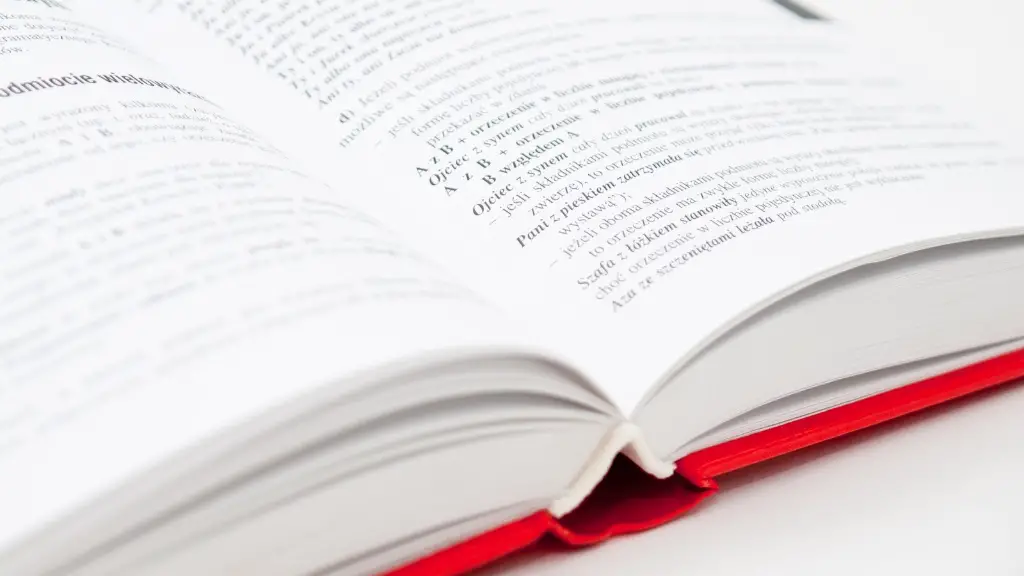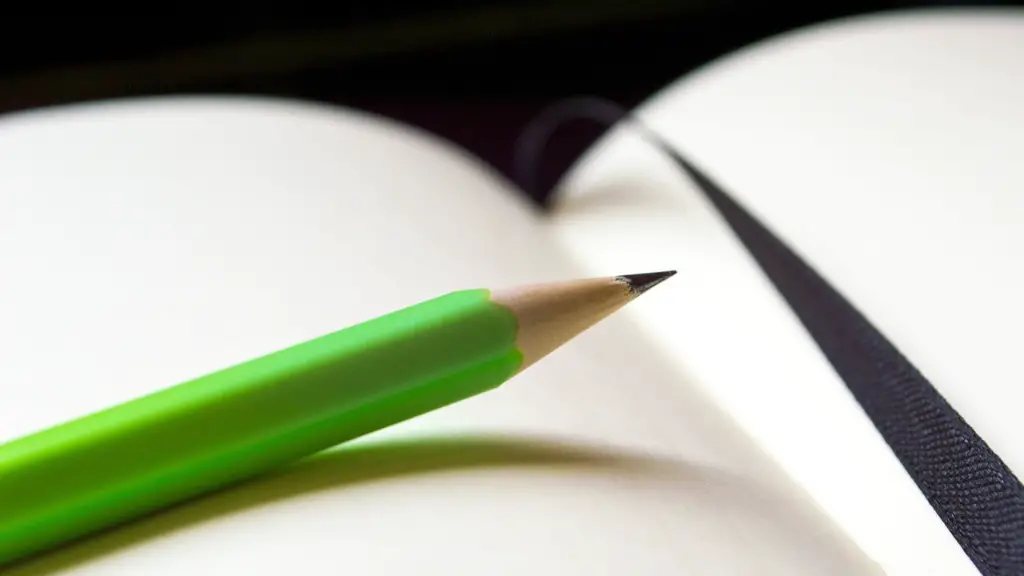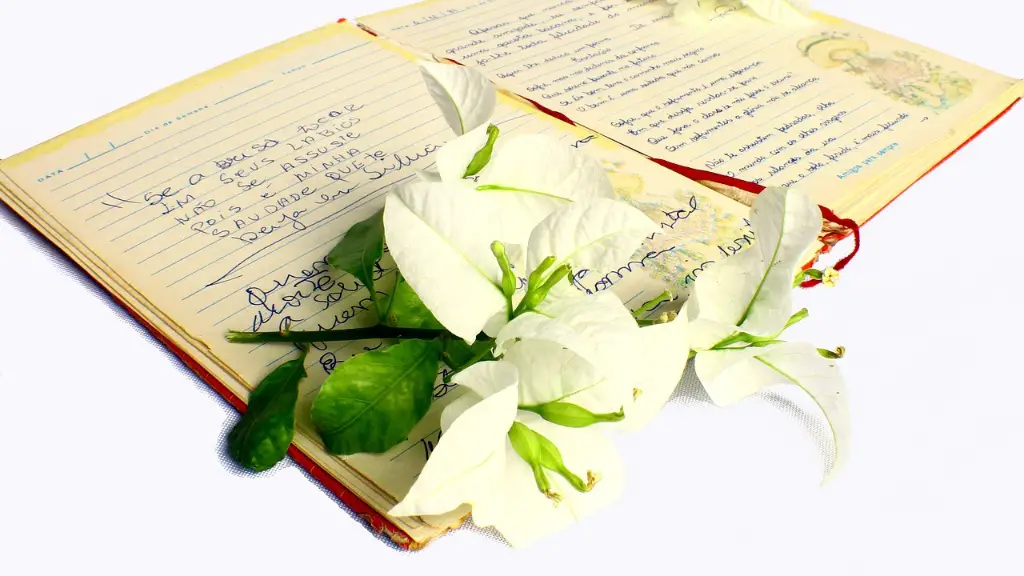Allegory is a type of figurative language often used in contemporary poetry. Allegories involve a narrative story or play in which the subject or character represents a deeper, more profound meaning than may be immediately apparent. By examining the story, characters, images and symbols used, we can begin to unravel deeper layers of meaning that may not be immediately visible to the reader. Allegory gives a voice to an idea, and conveys it in a manner which is both visually appealing and intellectually stimulating.
Allegory has been used in poetry since ancient times, with the ancient Greeks and Romans utilizing allegory in many of their works. The story of Orpheus in the underworld is an example of an allegory, as it embodies many elements of death and rebirth. In the Middle Ages, allegorical poetry was particularly popular, with Geoffrey Chaucer and Edmund Spenser being two of the most famous practitioners.
In contemporary poetry, allegory is used by many renowned poets to perpetuate their messages. Modern poets use the allegorical form for both their personal experiences, as well as for larger societal issues. For example, the acclaimed poet and feminist Adrienne Rich uses allegory in her work to describe a world of inequality and inequity, whereas Emily Dickinson employs the form to trace her journey through life.
Allegory can also be employed to explore certain philosophical or moral issues. For example, the American contemporary poet W. S. Merwin uses allegory in his poetry to explore issues of power, authority and moral responsibility. By reading the symbolic messages present in his poetry, we can begin to understand key issues of power and social justice which were so important to Merwin.
Allegorical poetry can also be seen as a way for poets to convey their innermost thoughts and feelings in a metaphorical way. Poets such as Amir Khusrau, T.S. Eliot, Seamus Heaney and John Ashbery have all employed allegory in their work as a way to explore aspects of their own emotional state and feelings. By expressing their innermost thoughts in a symbolic way, contemporary poets can communicate their messages with greater clarity and precision.
Allegory has become a key feature of modern poetic expression, and is used by many renowned poets in order to explore their innermost feelings. By dissecting the metaphors, symbols and characters in a modern poem, we can begin to uncover a range of hidden meanings and messages. As such, allegory has become an essential tool for contemporary poets to communicate their ideas and ideas to their readers.
Expert Perspective
According to literary scholar Professor Howard N. Bolinder, the use of allegory in contemporary poetry is a vital tool to communicate an author’s ideas and emotions. In his essay “Allegory in Postmodern Poetry”, Bolinder writes:
“Allegory serves as a means for a poet to engage with the complexities of the human experience, allowing for a richer and more multi-dimensional expression of feelings, emotions and ideas. By conveying messages in a symbolic and powerful way, contemporary poets can explore morally charged issues such as justice, faith, hope and freedom without the need to be explictly definite or literal.”
These words from Bolinder perfectly encapsulate the power and potential of allegory in modern poetry. Not only does it allow for poems which explore complex ideas and emotions in an indirect and fascinating way, but it also provides a poetic means to convey messages to readers in a powerful and effective manner.
Contrasting Perspectives
Whilst allegory has its advantages, it is still possible to critique the usage of allegory in contemporary poetry. Some literary critics have argued that the use of allegory can lead to a lack of clarity and consistency in a poem, as well as a lack of focus and direction. They argue that by using symbols and metaphorical language to convey ideas, the message can become diluted and, at times, can be difficult for the reader to comprehend.
However, these criticisms must be weighed against the wealth of benefits that allegory has to contemporary poetry. By unlocking layers of hidden meanings, allegory can provide insights into the depths of the human experience which would otherwise be difficult to express ‘on paper’.
Applying Allegory
Applying allegory to a poem can be both an exciting and a daunting prospect. To get started, poets can consider the idea, emotion or experience which they would like to convey, and then consider what symbols, characters or stories may best represent this. Taking the time to carefully craft the symbolism and imagery in the poem can result in a powerful and impactful piece of poetry, which communicates the poet’s ideas in a unique and memorable manner.
Once the idea has been settled upon, poets can then start writing the poem. Paying attention to the rhythm and structure of the poem can help to create an effective allegory, and this will often also require experimentation with forms, ideas and words. The end result should be a carefully crafted poem which conveys an idea, emotion or experience in a powerful and thought-provoking way.
Exploring Allegory
Exploring the concept of allegory in contemporary poetry can be a fulfilling and exciting journey. Whilst there is no single ‘right’ way to write an allegorical poem, there are a number of key principles which poets should aim to adhere to. These include considering the best symbols and images to represent their ideas, as well as exploring ideas of rhythm and structure in order to create a strong and meaningful piece of poetry.
Allegory can also be employed as a means of conveying an author’s personal experiences in an indirect, yet powerful manner. Using characters, stories and symbols to represent the author’s journey through life can be a therapeutic process, as well as a way for the author to convey their feelings in an effective way.
Evolving Allegories
Allegorical works are also a way for poets to explore evolving ideas and challenges. For example, many modern poets have begun to use allegory to explore the issue of climate change in their work. By looking at the characters, symbols and stories they use, we can begin to understand how the poet is exploring these ideas in their poetry.
Furthermore, by reading modern allegorical works, we can begin to gain an insight into how the contemporary world is being seen and experienced by these poets. Whether discussing political issues or personal experiences, allegory can provide a powerful platform for poets to express their ideas in a powerful and meaningful way.
Limitations of Allegory
Whilst allegory can be an effective method of storytelling, it is important to recognise that it does have its limitations. For example, some literary critics have argued that allegory can become repetitive, offering no real surprises or revelations for its readers. In addition, allegorical works can often be quite ‘predictable’ in their narrative structure, meaning that readers may become disengaged with the text as it progresses.
It is also worth noting that, by focusing on allegory, some readers may miss the ‘details’ of a poem. Whilst allegory can allow for broad and sweeping messages, it may sometimes be at the detriment of the finer points and nuances which may be present in a text. For example, by delving into the language of a poem, we can gain an insight into the poet’s intentions, ideas, and the world they were living in.
Conclusion
In conclusion, allegory can undoubtedly provide a powerful platform for contemporary poets to express their ideas and emotions. By utilizing characters, symbols and stories, contemporary poets can explore greater depths of the human experience and communicate complex ideas in a clear and meaningful manner. However, it is also important to recognize the limitations of the allegorical form, and to ensure that the poem does not become too ‘predictable’ or one-dimensional for its readers.




